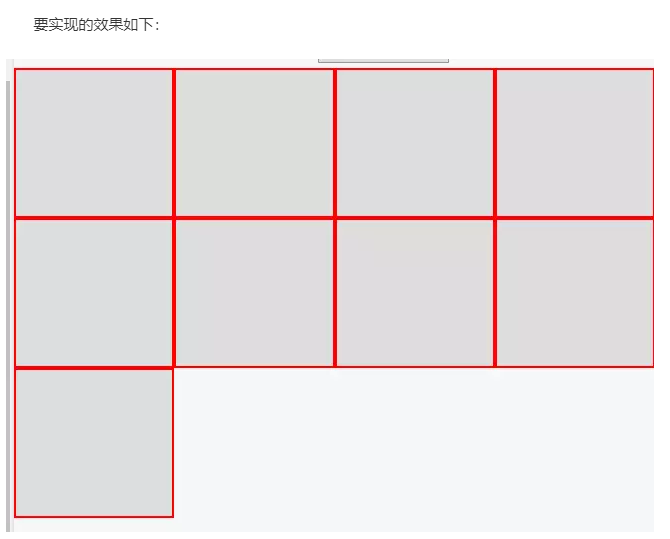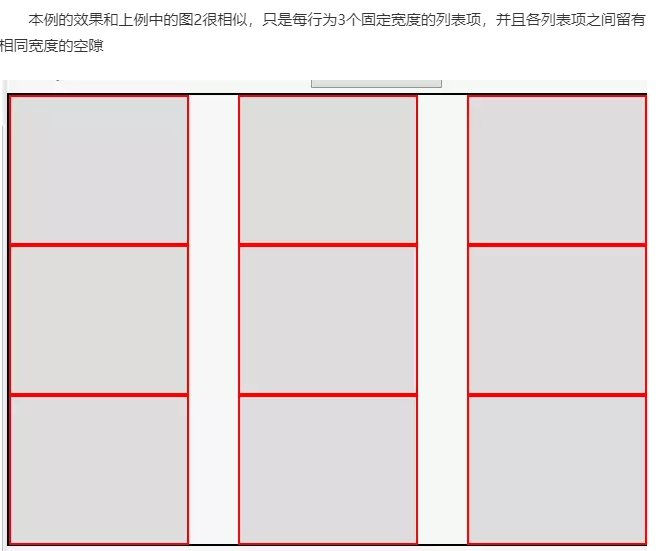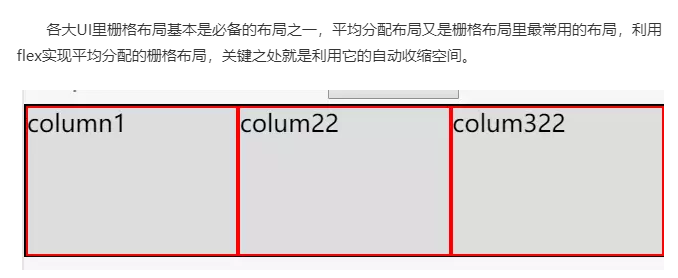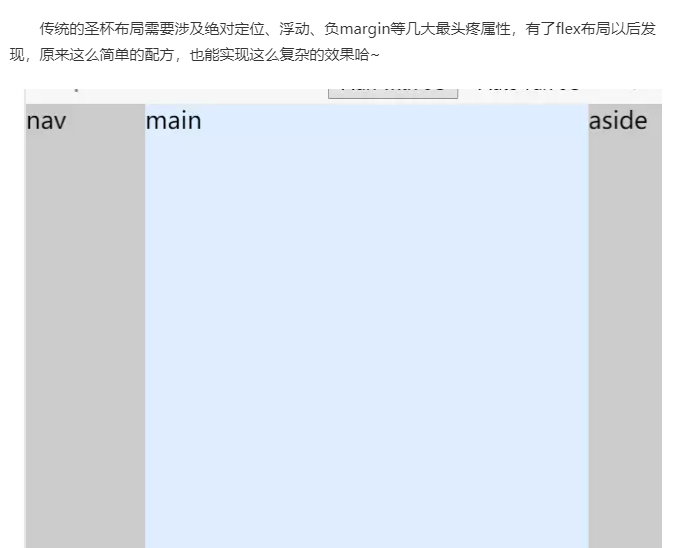1:web页面布局(topbar + main + footbar)

html代码:
<div class="container">
<header>header...</header>
<main>内容</main>
<footer>footer...</footer>
</div>
css代码
header{ height:100px; background:#ccc; } footer{ height:100px; background:#ccc; } .container{ display:flex; flex-direction:column; height:100vh; } main{ flex-grow:1; }
1:使用flex-direction使整体布局从上向下布局
2:flex-grow:1使得main自动填充剩余的空间
2:每行的项目数固定并自动换行的列表项

css代码
ul{ display:flex; flex-wrap:wrap; } li{ list-style:none; flex:0 0 25%; background:#ddd; height:100px; border:1px solid red; }
1:flex:0 0 25%,相当于flex-basis:25%,使得每一个列表项的宽度占外层容器(本例中的ul元素)的25%,因此每行最多能够排开四个列表项。
2:flex-wrap:wrap,使得每行填满时会自动换行
3:实现自动划分多余空间的列表项

css代码
ul{ display:flex; flex-wrap:wrap; justify-content:space-between; border:1px solid black; } li{ list-style:none; 120px; background:#ddd; height:100px; border:1px solid red; }
1:justify-content:space-between;使主轴方向的多余空间平均分配在两两item之间
4:平均分配空间的栅格布局

html代码
<div class="row">
<div class="column">column1</div>
<div class="column">colum22</div>
<div class="column">colum322</div>
</div>
css代码
.row{ display:flex; flex-wrap:wrap; border:1px solid black; } .column{ list-style:none; background:#ddd; flex:1; height:100px; border:1px solid red; }
flex:1 这里针对item应用了flex:1,相当于flex:1 1 0%,而之所以不管各个column元素内容的宽度为多大,都能均分到相等的空间,正式因为相当于在设置了flex-grow:1使得剩余空间按相等比例自动分配的同时又设置了flex-basis:0%,才使得整个空间都平均分配了(更详细的关于[flex]缩写属性,请戳重新认识flex缩写属性—[flex])。
5:圣杯布局

html代码
<div class="container">
<main>main</main>
<aside>aside</aside>
<nav>nav</nav>
</div>
css代码
.container{ display:flex; height:100vh; } aside{ 50px; background:#ccc; } main{ flex-grow:1; background:#def; } nav{ 80px; background:#ccc; order:-1; }
- 对main用flex-grow:1,使得中间主元素空间自动扩充
- 对nav应用order:-1,使得order处于最左侧(html中main写在了最前,以利于优先加载主内容区)
6:元素水平垂直居中

html代码
<div class="container">
<div class="inner">我是中间的内容</div>
</div>
css代码
.container{ height:300px; 300px; border:1px solid red; display:flex; justify-content:center; align-items:center; } .inner{ border:1px solid black; }
- justify-content:center;使item元素水平居中
- align-items:center;使item元素垂直居中
这么多场景都难不倒flex有木有,果然名不虚传~( 想更详细的了解flex相关属性的话,请戳flex入门—了解这些flex属性~)